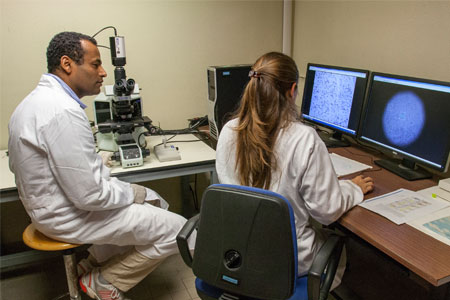- Authors:
-
Pugliese, F; Hunink, Mg; Gruszczynska, K; Alberghina, F; Malago', Roberto; van Pelt, N; Mollet, Nr; Cademartiri, F; Weustink, Ac; Meijboom, Wb; Witteman, Cl; de Feyter, Pj; Krestin, Gp
- Title:
-
Learning curve for coronary CT angiography: what constitutes sufficient training?
- Year:
-
2009
- Type of item:
-
Articolo in Rivista
- Tipologia ANVUR:
- Articolo su rivista
- Language:
-
Inglese
- Referee:
-
Sì
- Name of journal:
- Radiology
- ISSN of journal:
- 0033-8419
- N° Volume:
-
251
- Number or Folder:
-
2
- Page numbers:
-
359-368
- Keyword:
-
SPIRAL COMPUTED-TOMOGRAPHY, DIAGNOSTIC-ACCURACY, AMERICAN-COLLEGE, ARTERY-DISEASE, PERFORMANCE, INTERMEDIATE, EXPERIENCE, STATEMENT
- Short description of contents:
- PURPOSE:
To prospectively evaluate the effect of experience with coronary computed tomographic (CT) angiography on the capability to detect coronary stenoses of 50% or more.
MATERIALS AND METHODS:
The institutional review board approved the study protocol. All patients gave consent to undergo CT angiography before conventional coronary angiography after being informed of the additional radiation dose. They also consented to the use of their data for future research. Three radiologists and one cardiologist inexperienced with coronary CT angiography attended this institution's cardiac CT unit for a 1-year fellowship. Fellows were involved in the acquisition and reading of 12-15 coronary CT angiograms per week (about 600 per year). To assess the progression in diagnostic performance, fellows (readers) independently read 50 CT angiographic test cases in patients who also underwent conventional coronary angiography. Cases were repeatedly assigned in random order at baseline and at 4, 8, 26, and 52 weeks. The same cases were examined by two experts in consensus. Sensitivity, specificity, and diagnostic odds ratios (DORs) were calculated and compared with conventional coronary angiography as the reference standard.
RESULTS:
Respective reader ranges for sensitivity, specificity, and DOR were 33%-72%, 70%-94%, and 3.8-8.1 at baseline; 43%-80%, 71%-88%, and 8.8-15.2 after 6 months; and 66%-75%, 87%-92%, and 14.7-25.8 after 1 year. For expert physicians, respective results were 95%, 93%, and 255.9. Between baseline and 6 months, readers 1-3 showed nonsignificantly improved sensitivities, while specificities remained similar. Reader 4 showed significantly improved specificity, while sensitivity remained similar; all readers nonsignificantly improved DORs. Between baseline and 1 year: readers 1 and 2 significantly improved sensitivity but not specificity; reader 4 significantly improved specificity but not sensitivity; readers 1, 2, and 4 improved DOR significantly; reader 3 nonsignificantly improved sensitivity, specificity, and DOR.
CONCLUSION:
Increasing experience with coronary CT angiography improved the diagnostic performance of inexperienced physicians. However, acquiring expertise in coronary CT angiography was slow and may take more than 1 year.
- Product ID:
-
73798
- Handle IRIS:
-
11562/474046
- Deposited On:
-
February 3, 2014
- Last Modified:
-
March 8, 2024
- Bibliographic citation:
-
Pugliese, F; Hunink, Mg; Gruszczynska, K; Alberghina, F; Malago', Roberto; van Pelt, N; Mollet, Nr; Cademartiri, F; Weustink, Ac; Meijboom, Wb; Witteman, Cl; de Feyter, Pj; Krestin, Gp,
Learning curve for coronary CT angiography: what constitutes sufficient training?
«Radiology»
, vol.
251
, n.
2
,
2009
,
pp. 359-368
Consulta la scheda completa presente nel
repository istituzionale della Ricerca di Ateneo 








